Lancashire's pothole problem shows signs of improvement as highways boss promises a smoother road ahead
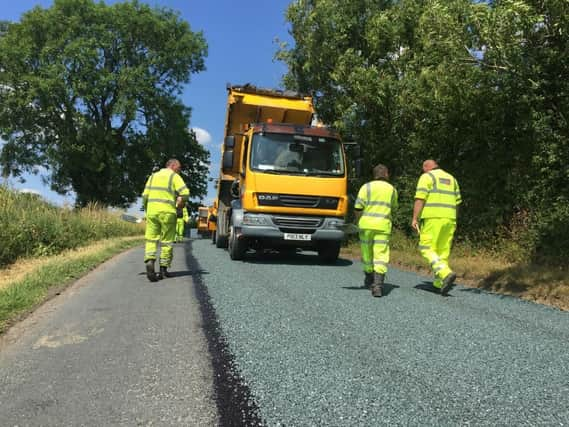

Highways authority Lancashire County Council says that a revamp of the way it resurfaces the region’s roads is responsible for the improvement - which has seen the surface defects needing attention drop from over 62,000 in 2016/17 to around 39,000 in 2018/19.
But new figures also show that the volume of successful claims made against County Hall for damage to vehicles travelling on its road network more than doubled in the past twelve months to almost 650 - costing the council £176,000 in payouts. Thirteen individual cases resulted in damages of over £1,000 being paid, the largest claim being for £7,200 on Liverpool Road in Rufford.
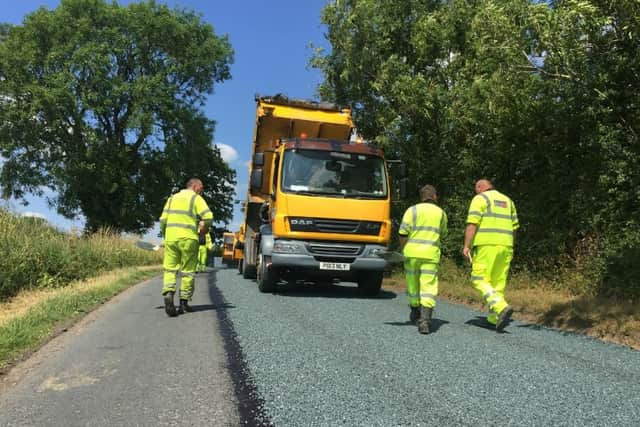

Advertisement
Hide AdAdvertisement
Hide AdHowever, the authority’s director of highways, Phil Durnell, says that motorists should be starting to notice smoother journeys as the county continues to roll out its “surface dressing” programme. The technique is a new way of treating the roads to protect them from one of the biggest threats to the condition of a carriageway - water.
“The worst thing that can happen is for water to get down into the lower levels of the road surface - once that happens, the story of the pothole starts,” Phil explains.
“You don't even need freezing temperatures - just the hydraulics of vehicles pushing water down into the surface can start breaking up the Tarmac.
“We are now using a new system called the ‘lockdown’ process, which completely seals the road and also improves the texture for skid resistance.
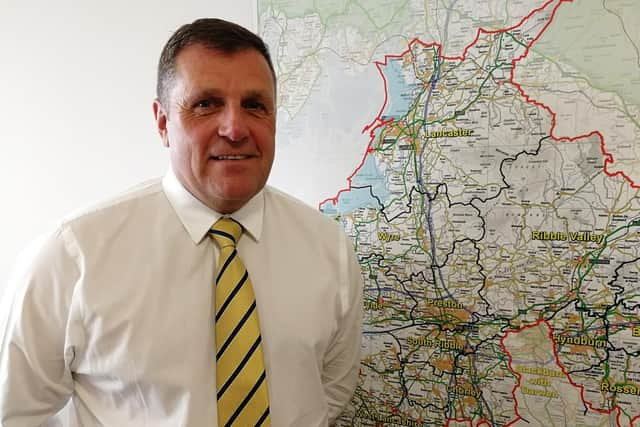

Advertisement
Hide AdAdvertisement
Hide Ad“We spray a surface coat onto the chippings we have laid down, to reduce the number of them which remain loose - and that means the road can get back up to speed sooner.”
The proportion of the county’s road network being targeted for surface dressing doubled two years ago, with the programme focusing on main, high-speed routes like the A59. Forty-four stretches of road are due to be treated with the new technique during 2019/20.
The county council, which is responsible for almost all non-motorway routes in Lancashire - except in the Blackpool and Blackburn council areas - claims that the change of approach is reflected in the reduction in the number of potholes requiring intervention.
The authority also believes that surface dressing can last more than a decade before it needs to be redone - provided the proper preparatory work beneath the surface has been completed first.
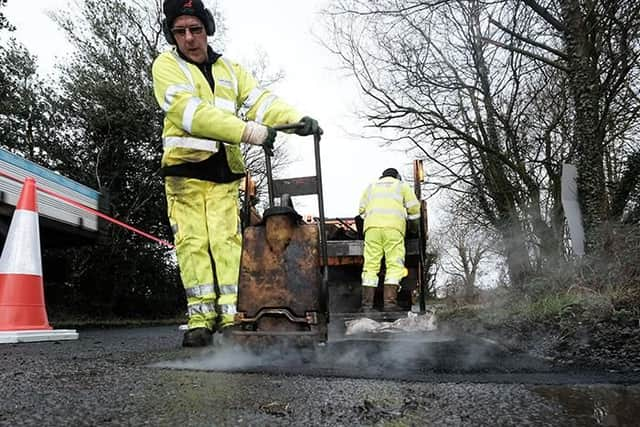

Advertisement
Hide AdAdvertisement
Hide AdMeanwhile, traditional resurfacing - for roads which have gone beyond repair - will still take place on 14 routes.
But Phil Durnell accepts that the public perception of the road network for which he is responsible is not always positive.
He hopes that situation will change as the authority moves into the second phase of a 15-year programme to improve the region’s roads - known as the Transport Asset Management Plan (TAMP).
“It’s not always a case of tackling the worst roads first - we’re trying to keep the whole network up to a good standard.
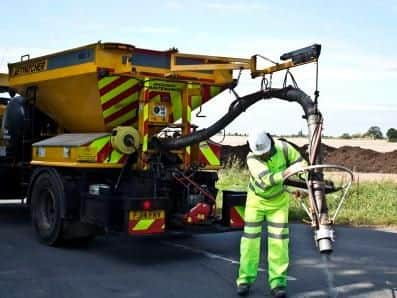

Advertisement
Hide AdAdvertisement
Hide Ad“I think some of [the public criticism] is because of what they see outside their own front door,” Phil says.
“We’re hoping to address that through the TAMP and will be spending a bit more on residential roads in the next five years. We have done work on them already and they haven’t been forgotten about - but people should start to see more of an improvement in future.”
That means that traditional pothole-filling is still very much part of the programme - but that, too, has undergone something of a revolution in recent years.
“There is a theme here, but it’s all about keeping the water out, “ Phil explains.
Advertisement
Hide AdAdvertisement
Hide Ad“Where we are patching potholes, we are cutting out around the hole and making sure the bond coating is put down correctly and seals the edges.
“We are also using injection spray patching, predominantly on the rural roads. Contractors do the repairs needed as they find them.”
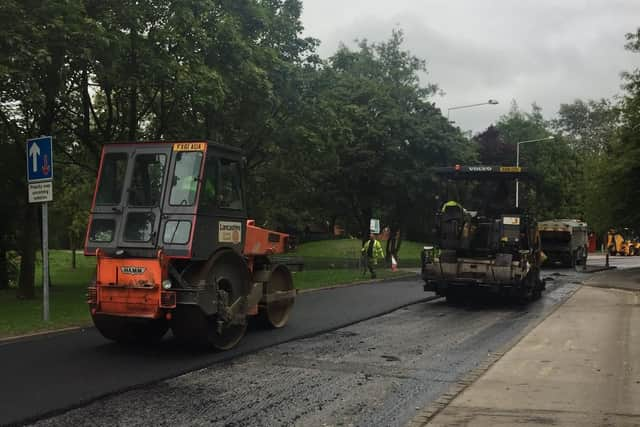

But the majority of maintenance work is carried out by the council’s own in-house team - and the money spent on repairs totalled £21.6m in 2018/19, an increase of £5m on the year before.
Some of that increase can be accounted for by underspends carried over from one year to the next, but the county council’s coffers for road maintenance have also been boosted by the authority being rated as one of the best in the country for carrying out repairs. That means that County Hall gets the maximum government grant from the Highways Incentive Fund - which will see Lancashire handed £3.8m next year.
Advertisement
Hide AdAdvertisement
Hide AdMeanwhile, as Lancashire’s summer - such as it was - gives way to autumn, the weather remains the biggest challenge for the workers maintaining the county’s roads.
“The winter months are the busiest, because we are being reactive to problems - and the conditions also make it more difficult to carry out the work. We have repeated freezing and thawing - whereas if it froze all winter and then thawed out, that wouldn’t be as damaging,” Phil says.
As the patchwork of techniques used to bring the region’s road surfaces up to scratch continues to evolve, Phil is keen to point out that there is a “science” behind every intervention.
“We’re not just chucking chippings on or slapping tar in a hole - I hope we are finally busting that myth.”
‘WE WANT TO KNOW WHERE THE PROBLEMS ARE’
Advertisement
Hide AdAdvertisement
Hide AdLancashire residents who notice a defect on the county’s roads and pavements are being asked to tell the county council via the “Report It” section of the authority’s website.
The system allows complainants to pinpoint the problem on a map and also attach photographs of what they have found. Highways boss Phil Durnell says that it can help speed up the response times of the teams sent out to fix the faults.
“If somebody just tells us that there is a pothole on the A59, it can take some finding. But if we get enough information from Report It, that makes things much easier - and we can often send a team out straight away without having to go and do an assessment first.
“We can also then give feedback to let people know what we have done to resolve the issue they have raised,” Phil says.
Advertisement
Hide AdAdvertisement
Hide AdPotholes must be over 40mm deep to be deemed in need of attention.
Every road in Lancashire is inspected at least once a year, with the A-roads being visited every month and B-routes every quarter.
POTHOLE PERFORMANCE
The council has a series of targets for the maximum time which should be taken to respond to defects - not just potholes - which have been reported. The timeframe depends on the seriousness of the problem and the risk which it poses.
Between January and March this year, the authority met two out of the four main targets:
Advertisement
Hide AdAdvertisement
Hide AdEmergency safety defects - 4 hour response: target 95 percent; achieved 95.6 percent
Urgent safety defects - 2-day response: target 95 percent, achieved 94.1 percent
Non-urgent safety defects (main routes) - 5-day response: target 90 percent, achieved 81.4 percent
Non-urgent safety defects (local routes) - 20-day response: target: 90 percent, achieved 96.1 percent
Advertisement
Hide AdAdvertisement
Hide AdAll response targets except those for emergency repairs allow an additional two days’ assessment time.
Highways director Phil Durnell says the failure to hit the five-day target is due to the nature of the work which often needs to be undertaken on problems which fall into that category.
“A lot of those issues are on the higher-use road network, so you can’t just send out a couple of people to do the repair - you have to protect the workforce and implement proper traffic management. That in itself can take more than five days to plan, but we’re now getting extra resources and that is improving the five-day percentage.”
THE POLITICS OF POTHOLES
Just under half of a £1.2m grant which Lancashire County Council received from the government’s Pothole Action and Flood Resilience Fund is to be spent on other “emerging issues” on the highways network.
Advertisement
Hide AdAdvertisement
Hide AdThe move will see £549,000 of the cash used to support projects which require more work than originally anticipated - including cracking carriageways due to land slips and preparatory resurfacing work for road safety upgrades.
A report presented to cabinet members confirmed that the reallocated money is being used in a way which is “aligned to the conditions” under which it was given. The remaining £693,000 will be spent on repairing roads which require repeated visits to keep them “safe and serviceable”.
But the Labour opposition group criticised the move and accused the ruling Conservatives of “not spending the money on what it was intended for”.
“I’m regularly told that there is no funding to repair potholes on residential streets in my division - and it’s a similar story across Lancashire,” said County Cllr Gillian Oliver, Labour spokesperson for highways, who also represents Preston South West.
Advertisement
Hide AdAdvertisement
Hide Ad“There are residents crying out for repairs - so surely there must be a way of gearing up the system to respond to local concerns rather than what it says on a spreadsheet.
“And the council is also missing its own targets for five-day repairs on some of the main routes in the county. They would be better off if they spent the money they have properly, instead of having to use it to defend themselves in court when people damage their vehicles,” she added.
But council leader Geoff Driver said the roads budget had been increased by a cumulative £20m since the Conservatives took control of the authority in 2017.
“We have to look at the issues at any one time and see where the money is best spent - and the grant [which has been partially reallocated] wasn’t given to us solely for use on potholes.
Advertisement
Hide AdAdvertisement
Hide Ad“We have put all this extra money in precisely because the last Labour administration had allowed the roads to get into such a mess.
“While I fully accept that there are still potholes in various parts of the county, it is clear that we are making significant progress - I can see that purely on the basis of the reduction in the number of emails I receive on the subject from the public,” County Cllr Driver added.
ROADS WITH THE MOST COMPLAINTS IN CENTRAL LANCASHIRE (2018/19)
Preston - Longridge Road
South Ribble - Leyland Road
Chorley - Back Lane
WHAT IS SPENT WHERE
Across the 12 districts of the Lancashire County Council area, this is how much each area received in road repair money during 2018/19.
1) West Lancashire – £2.7m
2) Lancaster – £2.6m
3) Wyre £2.1m
4) Chorley – £1.9m
= Ribble Valley – £1.9m
6) Rossendale – £1.8m
7) South Ribble – £1.7m
8) Preston – £1.6m
= Pendle – £1.6m
10) Hyndburn – £1.4m
11) Fylde – £1.2m
12) Burnley £1.05m
Advertisement
Hide AdAdvertisement
Hide AdHighways boss Phil Durnell said that the money is spent where it is “needed most”, based on data on the condition of the roads.
IN NUMBERS
39,137 - number of potholes found on Lancashire County Council road network in 2018/19, down 23,000 on 2016/17.
43,822 - all highway safety defects (including potholes) on the county’s road network in 2018/19, down 29,000 on 2016/17
50 -70 - number of workers filling potholes and resurfacing Lancashire’s roads at any one time.